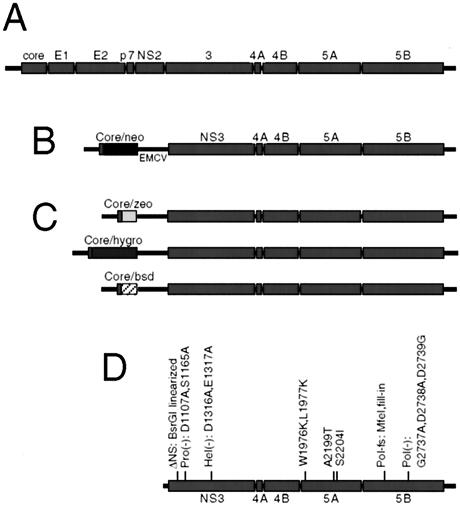FIG. 1.
HCV genome and replicon organization. (A) Schematic representation of HCV genomic RNA. The amino-terminal one third of the polyprotein, translated through the action of an IRES, encodes the HCV structural proteins, including the capsid protein, core, and the envelope glycoproteins E1 and E2. The remainder of the polyprotein encodes the viral nonstructural proteins NS2, -3, -4A, -4B, -5A, and -5B. (B) Organization of the prototype HCV subgenomic replicon. The majority of the structural region of the Con1 HCV polyprotein was replaced with the neomycin phosphotransferase gene (neo), cloned as a fusion with the first 16 amino acids of the core protein, such that translation is driven by the HCV IRES. Translation of the remaining NS proteins is mediated by the encephalomyocarditis virus IRES element (EMCV). (C) Organization of alternatively selectable subgenomic replicons tested in this study. Each drug resistance gene was cloned as fusions to the core protein, as in the neo replicon. (D) Location and description of replicon mutations utilized in this study.

